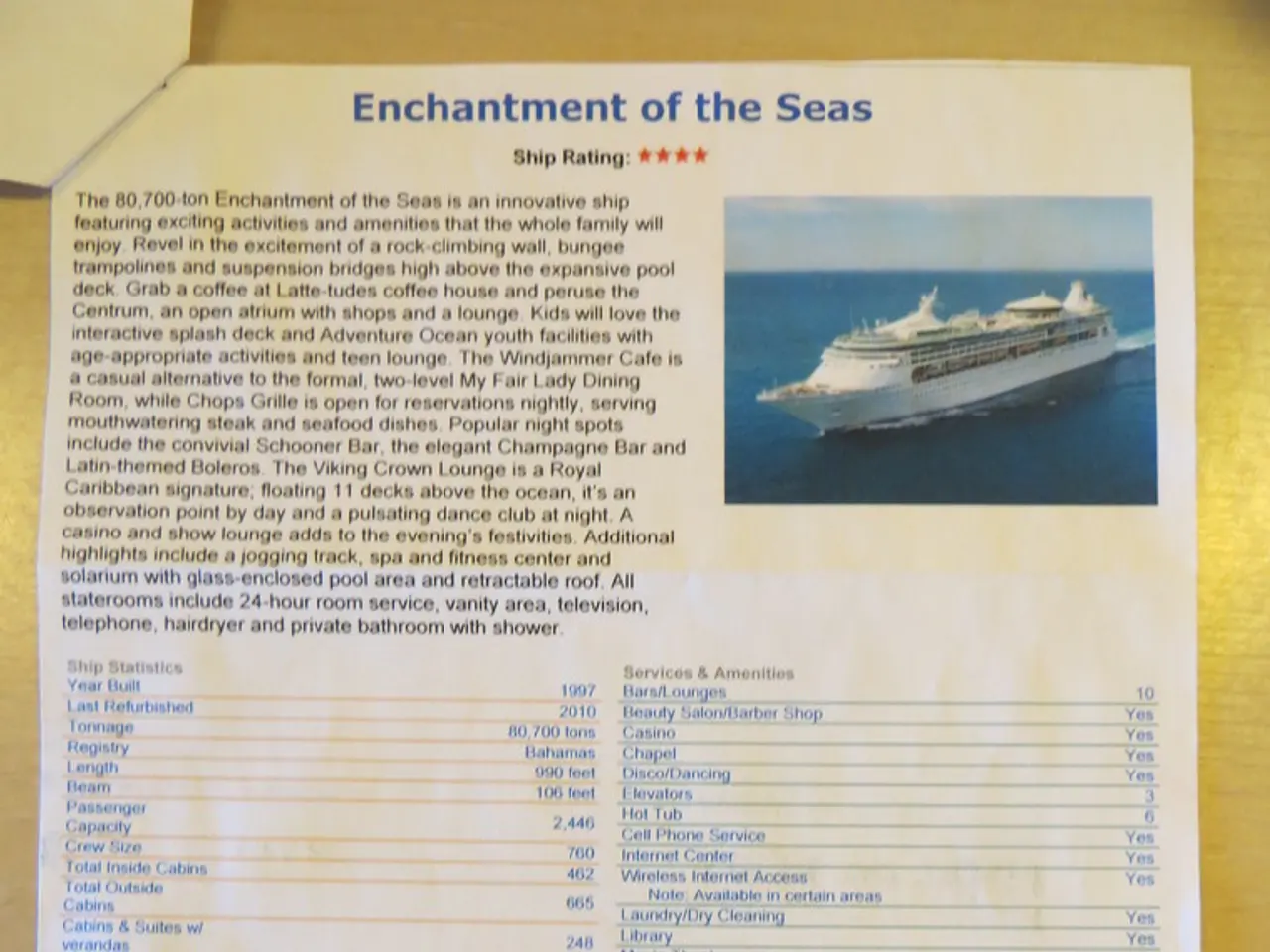Shipping costs for ocean containers remain stagnant as vendors and transport companies work to maintain composure
The global container shipping market is currently experiencing turbulence due to a combination of factors, including US tariffs and geopolitical tensions.
The Houthis, a Yemeni militia group, have recently threatened Israel-linked shipping, adding another layer of instability to the Middle East region and potentially impacting shipping routes in the Red Sea [1].
Meanwhile, ocean container rates on U.S. trade lanes have remained steady at approximately $1,900 per forty foot equivalent unit (FEU) since May [2]. This stability, however, contrasts with the volatile conditions on key trading routes such as China, Europe, and Japan, where US tariffs have caused significant disruptions.
Since 2025, tariffs imposed by the US have led to increased costs, shifts in trade volumes, and volatility in shipping demand and capacity on these routes. The most acute impact has been on the China-US shipping route, where tariffs averaging around 21% on containerized imports entering the US have caused initial surges in shipping volumes, followed by sharp declines [1].
Maersk, one of the world's largest shipping companies, reports that ocean container rates from China to US West Coast ports have recently fallen due to weaker demand after a tariff pause, but uncertainty remains high [1]. The "90-day pause" in tariff escalation temporarily boosted shipments, pushing some rates up due to capacity constraints, but longer-term trade tensions and shifts in sourcing (e.g., US apparel companies reducing China dependency) have dampened volumes and rates [1][2].
The impact extends to Europe-US and Japan-US trades, with carriers redeploying capacity from China-US to other trades like Far East-Europe in response to reduced China volumes [2]. This capacity shift leads to temporary freight rate distortions because it takes time to rebalance [2]. Tariffs and geopolitical risks, such as Middle East instability impacting Red Sea route, add further uncertainties for these trades [1].
The fluctuating tariff announcements, pauses, and resumptions under US policy have injected wide volatility into global container shipping markets, causing traditional peak shipping seasons to underperform or disappear, with falling freight rates and dropping cargo volumes forecasted through late 2025 [3].
Elsewhere, the U.S.-EU agreement maintains a 15% tariff on automotive exports, which have been subjected to 25% duties since earlier this year [4]. Rates on Asia-Northern Europe shipping routes have leveled out around $3,419 per FEU, reflecting the cumulative impact of demand spikes and vessel overcapacity [5].
In a separate development, the Trump administration's broader strategy is to anchor tariffs within the 15% to 20% range [6]. Preliminary pacts involve tariffs between 19% and 20%, and Freightos, a global freight marketplace, has alluded to additional agreements under negotiation with other key U.S. trading nations such as Vietnam, Indonesia, and the Philippines [7].
Despite these ongoing tariff disputes, price stabilization is evident in various shipping routes, with reported price dips aligned to generalized peak season demand dynamics and ongoing congestion at major ports [7].
References: [1] Maersk (2021). Container market update Q2 2021 [2] Freightos (2021). The US-China trade war’s impact on global shipping [3] FreightWaves (2021). Container shipping market faces a long road to recovery [4] Reuters (2021). U.S. and EU reach deal to avert auto tariffs [5] Freightos (2021). Asia-Northern Europe freight rates stabilize [6] The Wall Street Journal (2020). Trump Administration to Keep Tariffs on Chinese Imports [7] Freightos (2021). Freightos Index: Global freight market stabilizes amidst ongoing congestion at major ports
The potential instability in the Middle East region, specifically the threat to Israel-linked shipping by the Houthis, could disrupt supply chains involving sports equipment manufacturers who source materials from or ship products through the Red Sea.
Conversely, US tariffs on various trading routes have impacted sports gear supply chains by causing increased costs, shifts in trade volumes, and volatility in shipping demand and capacity, particularly for manufacturers importing materials or shipping goods from China.







